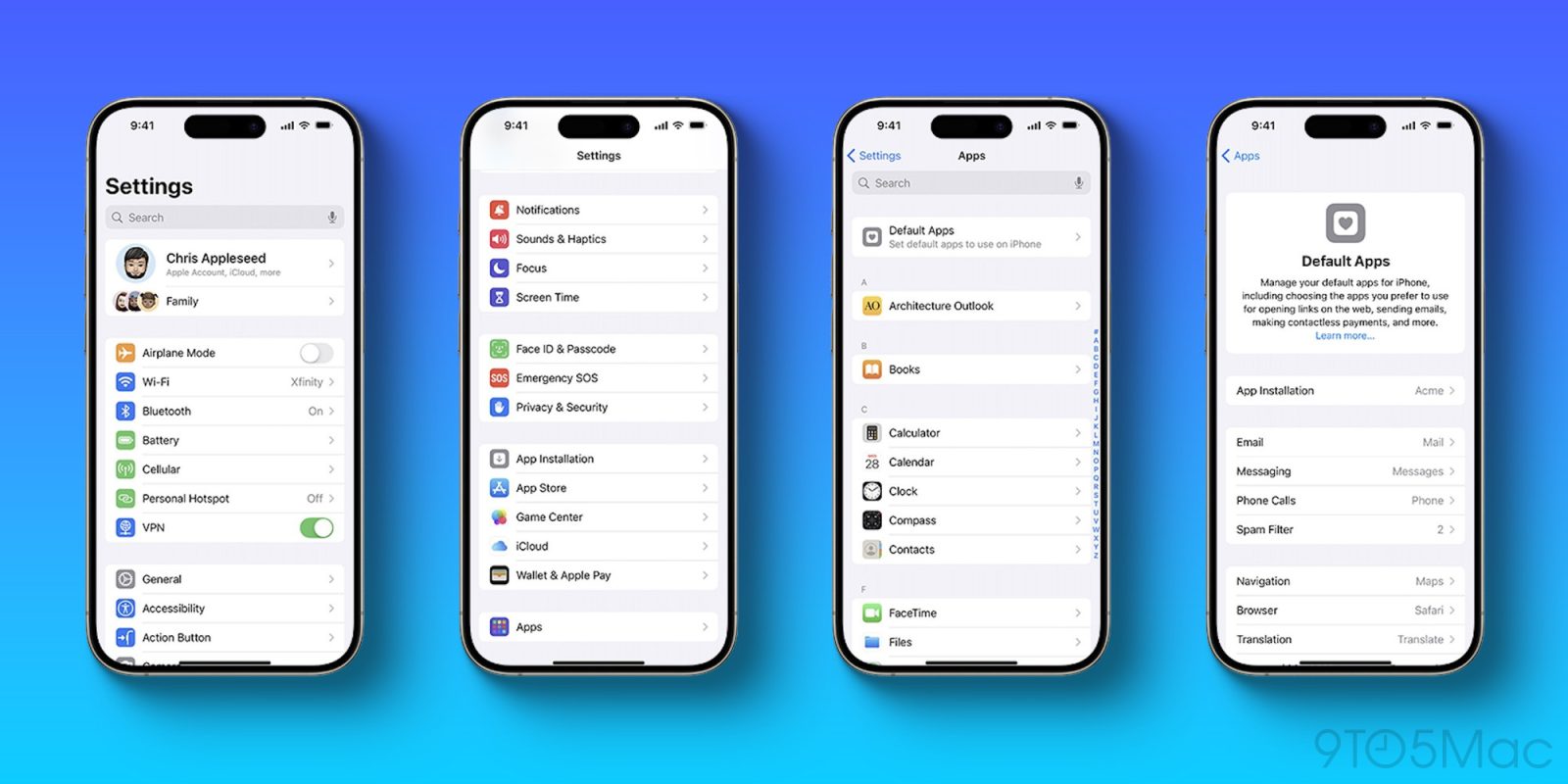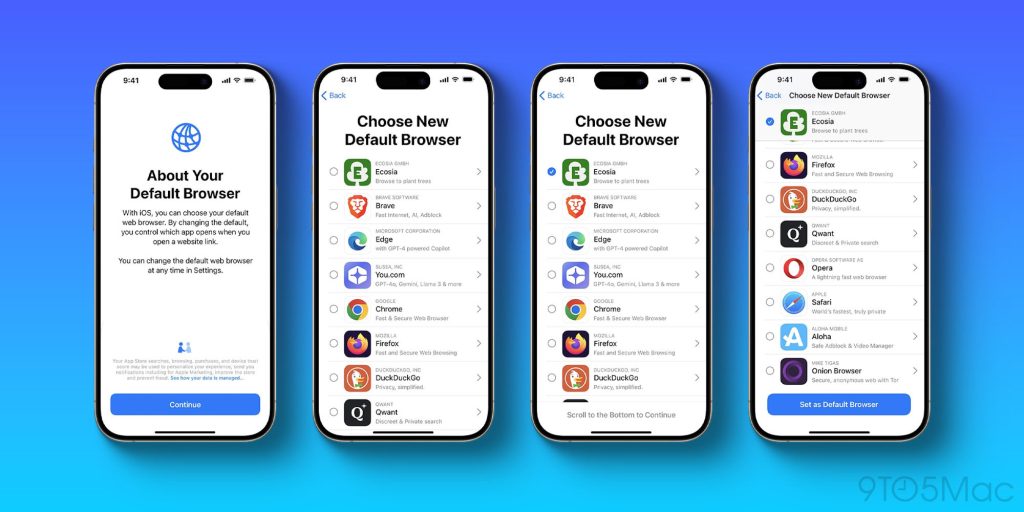
Apple has announced another set of changes to its App Store and iPhone policies in the European Union. This time around, Apple is expanding default app controls, making additional first-party apps deletable, and updating the browser choice screen.
Browser choice screen
Apple added the browser choice screen in the EU earlier this year, presenting users with the option to choose their default browser the first time they open Safari after updating their iPhone to iOS 17.4. Coming with an update later this year, Apple has more changes planned for the browser choice screen on iPhone and iPad:
- All users with Safari as their default browser, including users who have already seen the choice screen prior to the update, will see the choice screen upon first launch of Safari after installing the update available later this year.
- The choice screen will not be displayed if a user already has a browser other than Safari set as default.
- The choice screen will be shown once per device instead of once per user.
- When migrating to a new device, if (and only if) the user’s previously chosen default browser was Safari, the user will be required to reselect a default browser (i.e. unlike other settings in iOS, the user’s choice of default browser will not be migrated if that choice was Safari).

There are also changes coming to the design of the browser choice screen:
- Users will be able to select their default browser directly on the choice screen by tapping on their chosen browser, without seeing descriptive information on the App Store product page for that browser.
- Browser descriptions on the choice screen will include the app subtitle from the browser’s App Store product page.
- Users will be able to review each browser’s App Store product page by tapping on the chevron to the right.
- Users will be required to scroll through the full list of browser options before setting a browser as the default.
- If the chosen default browser is already on device, the chosen default browser will automatically open.
- If the chosen default browser is not already downloaded on device, the choice screen will show the selected browser’s download progress on the choice screen before automatically opening.
- If Safari is currently in the user’s Dock or on the first page of the Home Screen and the user selects a browser that is not currently installed on their device from the choice screen, the selected browser will replace the Safari icon in the user’s Dock or in the Home Screen.
- Developers of browsers on the choice screen will have access to a new set of data, available via an API in App Store Connect, about their browser’s performance on the choice screen. This data will include items such as selection rates on the choice screen and information about the default selection.
Default app changes
In addition to changes to the default browser rules and design, Apple is also making updates to the default settings for other apps as well. First, a future update to iOS 18 and iPadOS 18 will add a new Default Apps section to the Settings app where users can manage their default settings.
Currently, users in the EU can set defaults for their browser, mail app, app marketplace, and contactless apps. Apple will expand those options later this year, allowing users to set defaults for phone calls, messaging, password managers, keyboards, and call spam filters.
Finally, in spring 2025, Apple says iOS and iPadOS will add support for setting defaults for navigation apps and translation.
Deletable apps
Last but not least, Apple is also going to let users delete the App Store, Messages, Camera, Photos, and Safari apps with a software update later this year.
Add 9to5Mac to your Google News feed.
FTC: We use income earning auto affiliate links. More.





